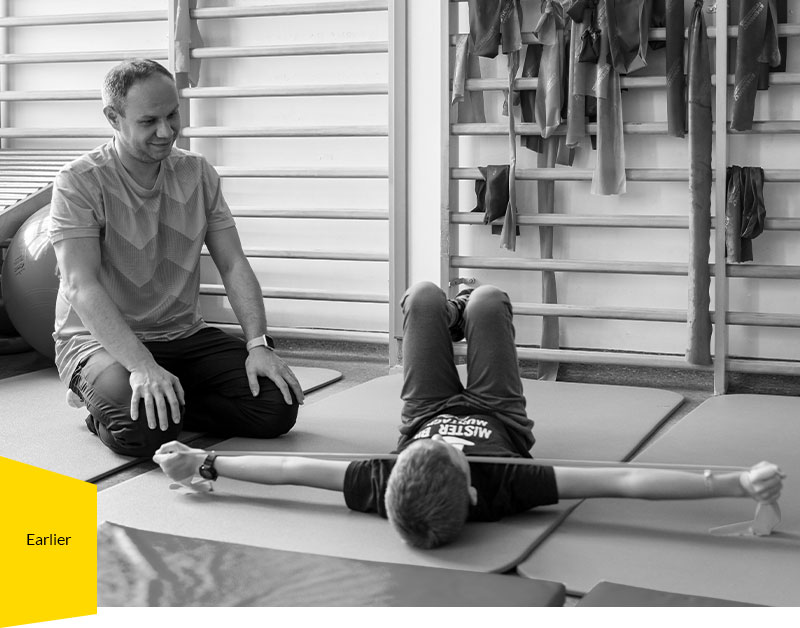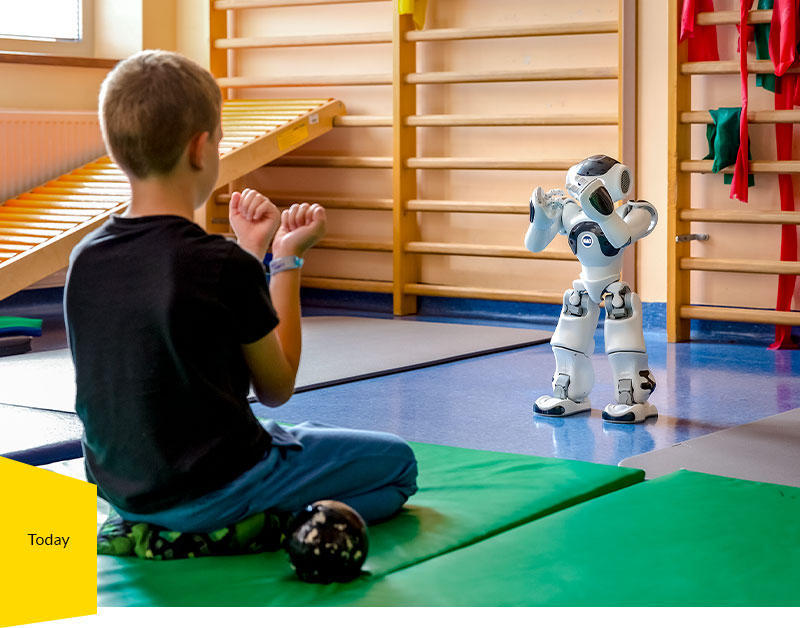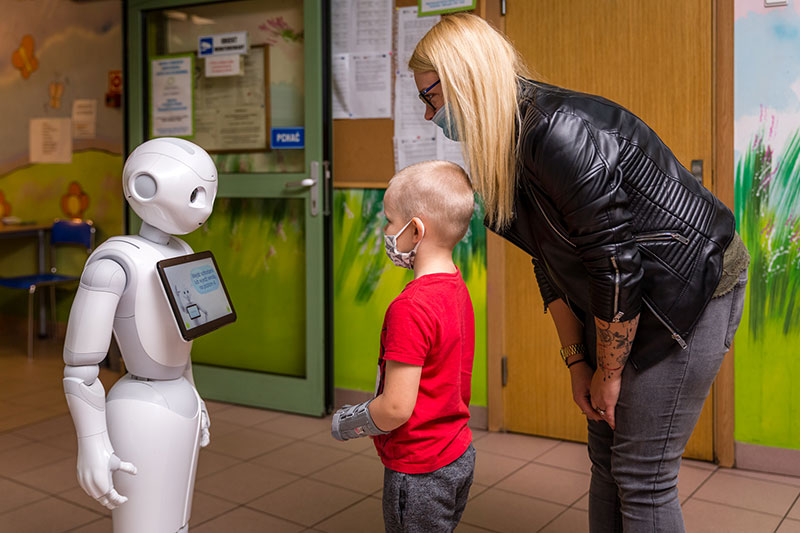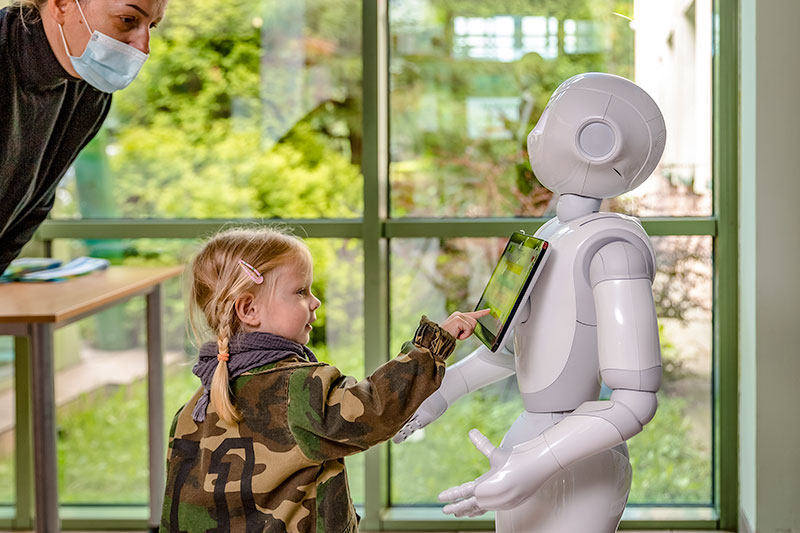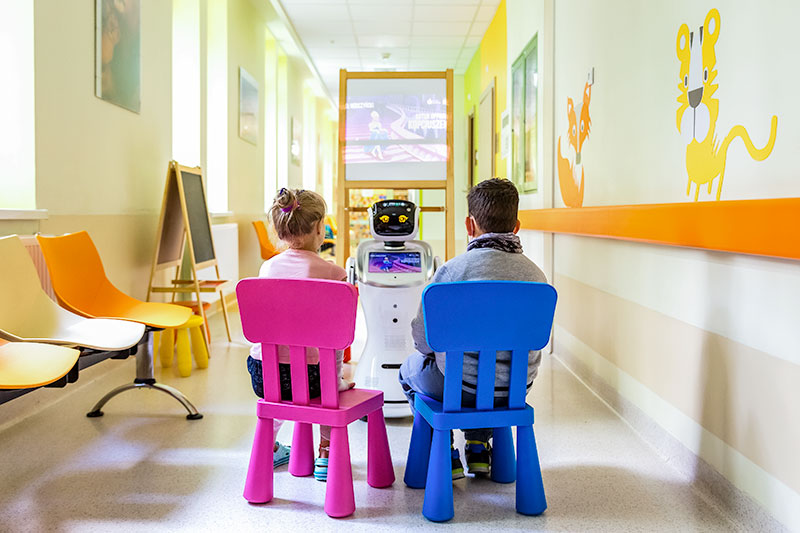#06 Nao, Sanbot and Pepper support kids
Ahead of his time, he envisioned the use of engineering and artificial intelligence in medical therapy. Something which a few decades ago was a product of the imagination of the famous writer and philosopher Stanisław Lem, today becomes reality. In the Sosnowiec Pediatric Center robots work with the youngest patients. Nao, Sanbot, and Pepper can not only take a temperature, read a story, and remind them of their medications, but most importantly they can make sick children feel better and give them encouragement.

Andrzej Siwiec, MD, President of the Management Board of the John Paul II Pediatric Center in Sosnowiec Sp. z o.o.
We strive to provide all of our patients with access to the highest quality healthcare services and state-of-the-art medical equipment. Therefore, we follow the development of new technologies introduced in the health care and we try to implement the most useful innovations in our center.
Thanks to the EU grant, we purchased six innovative humanoid robots: reception robots with the function of automatic body temperature measurement, inspection robots for inspecting and training in surgical and medical procedures, and educational robots for acting as instructors and controllers of medical exercises. This way our Center has become a pioneer in Poland in implementing this type of technology in the health care sector.
Our robots support medical staff by reporting test results or retrieving surgical code data. They also act as assistants, familiarizing young patients with the hospital's rules. Among other things, the robots display instructional videos that show how to follow recommendations related to epidemiological risk during a pandemic. Our robots also take non-contact temperature measurements, which allows us to efficiently isolate sick people. Educational robots, in turn, support the work of physiotherapist and rehabilitation teams. And let’s not forget that a hospital stay is always a difficult experience for young patients. Children are often afraid of the place and procedures. The robots look friendly and quickly earn trust of the little ones, making them more relaxed and open to cooperation.
As part of the investment, we also purchased hardware and software for remote work, including descriptions, consultations, and video counseling. This has enabled the hospital to continue to work uninterruptedly in the time of pandemic and help patients in need by offering electronic services for counseling, front desk work, and consultations, among other things.
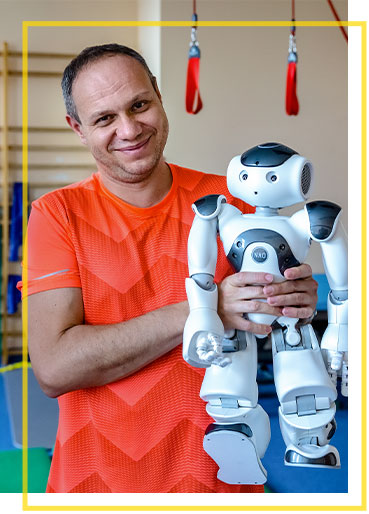
Łukasz Mierzwa, Physiotherapist Team Coordinator at the Rehabilitation Department of the John Paul II Pediatric Center in Sosnowiec
I have been working for the center for 12 years. I work with patients who require special attention and care. My youngest patients are just a few months old and the oldest ones are almost adults. The largest group of my patients are those with neurodevelopmental disorders, particularly cerebral palsy. When working with young patients, a personalized approach is the key. Each patient is different, so they need different stimulation and exercises that activate the relevant muscle parts. The mental attitude of patients is extremely important, too. For the past few months, humanoid robots have been helping us to take care of the well-being of the little ones. Children are curious about them. Their friendly, attractive appearance, voice modulation, jokes and gestures encourage kids to make contact, ask questions about their abilities and skills. Patients treat robots as colleagues, not as machines. Not only do robots reduce stress in young patients, they also serve an important motivational role. They encourage children to exercise under the guidance of a qualified therapist. Their presence during tedious or tiring physiotherapy allows our patients to make visible progress in their recovery with a smile, through play. The robots that have arrived at our center are a prime example of how new technologies bring support to all aspects of our lives, including health care. However, the development of robotics and virtual reality should be approached with responsibility and reason. The qualified staff of our center appropriately dose the contact between the robots and the patient. We want modern technologies to support therapy, and not to have a negative impact on the specific sensory and social perception of the world by the youngest. We do realize that the human brain, especially during the developmental age, is very receptive and malleable and that it needs social interaction in real space first and foremost. Protecting our mental, emotional zone of life is the biggest challenge facing health care. However, innovative solutions such as humanoid robots are needed and allow for better outcomes in therapy.
Say it the Silesian way
lazaret – hospital
bajtel, bombel – child
kucać – to cough

Project:
Purchase of computer and robotic equipment to provide continuous flow of information, e-counseling, e-consultation, and e-exercises for patients and caregivers
Beneficiary: John Paul II Pediatric Center in Sosnowiec Sp. z o.o.
Project amount: approx. 895 thousand PLN
ROP SV 2014-2020 subsidy: approx. 760 thousand PLN
Implementation period: IX 2020 – VI 2021






